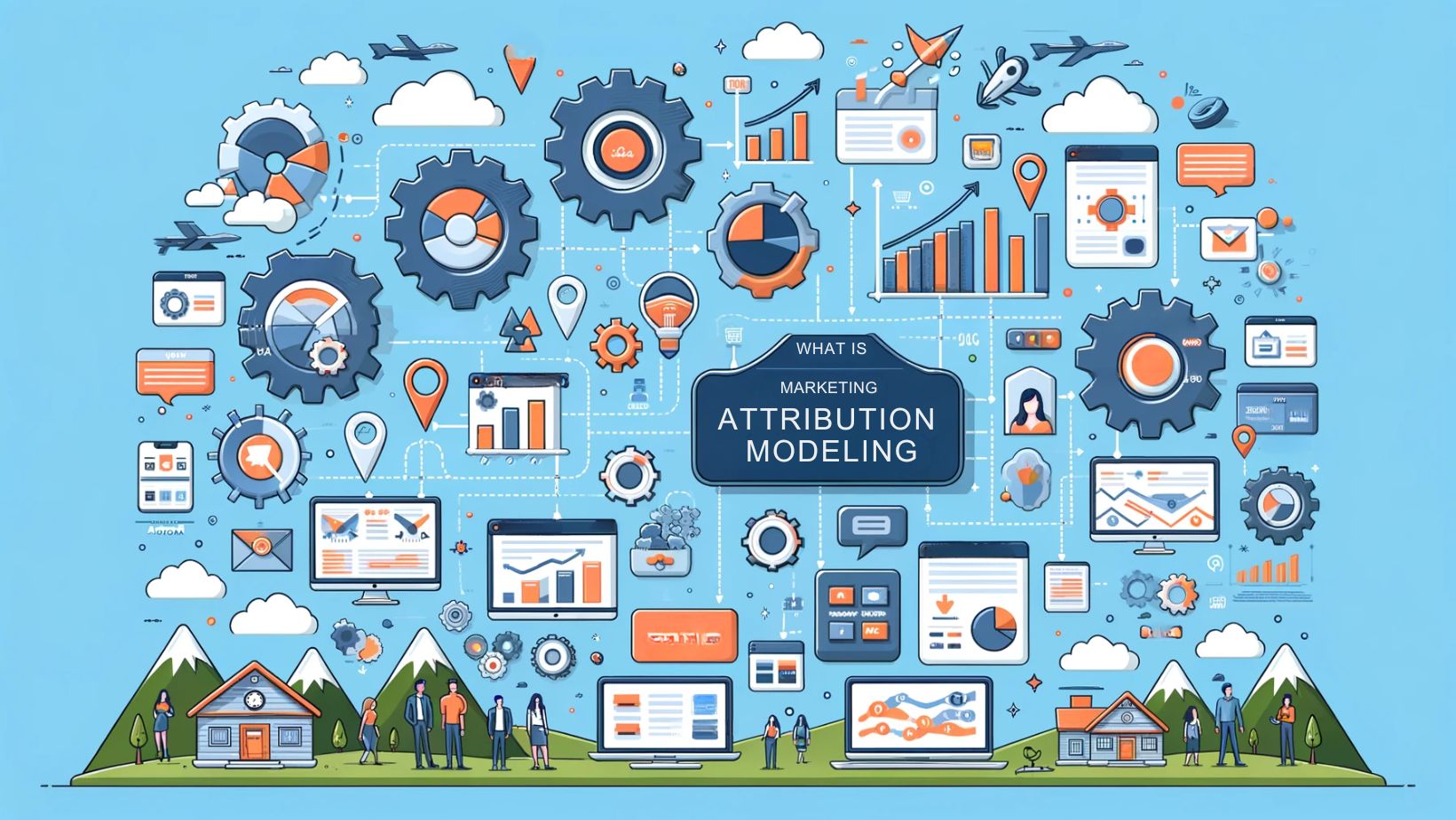Boost Marketing ROI through Attribution Modeling: Strategies for a New Age of Digital Marketing
Measuring and optimizing return on investment (ROI) is crucial for businesses looking to maximize the impact of their marketing efforts. However, with the proliferation of marketing channels and complex buyer journeys involving multiple touchpoints, accurately attributing conversions and sales to specific campaigns and channels has become increasingly challenging.
Attribution modeling is a data-driven approach that empowers marketers to attribute credit and value to each interaction in the customer journey, providing unprecedented visibility into marketing performance. By leveraging attribution models and insights, brands can strategically optimize budgets, boost campaign efficacy, and ultimately drive higher marketing ROI.

Why Attribution Modeling Matters for Boosting Marketing ROI
Making informed decisions about marketing investments and strategies requires a clear understanding of which efforts are working and which ones aren’t. This is where attribution modeling can make a tangible difference.
Here are some key reasons why attribution is crucial for improving marketing ROI:
- Get a Complete View of the Customer Journey: Attribution gives you visibility into every touchpoint, channel, and interaction leading up to a conversion, providing a holistic perspective of the customer journey. This helps identify high-value marketing activities.
- Optimize Spend Across Channels: By determining the actual influence of each channel, you can strategically allocate budgets to high-performing channels that offer the best return on spend.
- Enhance Campaigns & Content: Attribution identifies your most effective messaging and campaigns. You can refine content and targeting to double down on what’s working.
- Calculate Accurate ROI: Finally, attribution allows you to definitively measure true marketing ROI across paid, owned, and earned channels. KPIs become reliable and actionable.
Without attribution, there’s no way to fully grasp marketing effectiveness or make informed optimizations. Attribution modeling bridges this gap, enabling data-backed decisions.
Overcoming Core Challenges with Attribution
However, implementing marketing attribution comes with a unique set of challenges:
- Data Integration: Collecting and connecting customer data across disparate platforms and channels is difficult, leading to blind spots.
- Complex Journeys: Customers engage across devices and channels, making attribution complex.
- Attribution Biases: Certain models may overweight specific touchpoints, misrepresenting contribution.
- Dynamic Behavior: Customer preferences and journey patterns change rapidly, especially digitally. Models must keep up.
By being mindful of these core challenges, brands can proactively address them and set up attribution modeling for success. Let’s explore best practices to overcome barriers.
Best Practices for Attribution Modeling
Follow these vital best practices when implementing attribution to accurately measure marketing ROI:
- Set Clear Goals & KPIs: Align attribution with specific goals and metrics to track performance against. Common marketing KPIs include cost per lead, conversion rate, ROI, customer lifetime value, etc.
- Collect Robust, Cross-Channel Data: Tie together customer data across devices, platforms, and channels for a comprehensive journey view. Use data management platforms (DMPs), CRMs, analytics tools, etc.
- Test Attribution Models: Evaluating different models like first-touch, last-touch, linear, time-decay, etc. can provide varying insights. Determine what works best.
- Fix Attribution Gaps: Account for offline/online gaps by tracking phone calls, in-person interactions, etc. that influence buyers.
- Continuously Iterate & Optimize: Keep testing new models, weightings, and algorithms and refine them based on the latest data and patterns. Attribution must evolve with customer behavior.
By following these five fundamentals, brands can build effective attribution frameworks tailored to their business environments, data ecosystems, and analytics maturity. Let’s explore key types of attribution models next.

Types of Attribution Models and Their Impact
There are multiple varieties of attribution models, each with their own approach to assigning credit and value to marketing touchpoints influencing conversions.
Here are some major types of models:
Single-Touch Attribution Models
Single-touch models assign 100% credit to one specific touchpoint, usually first or last.
- First-Touch Attribution: Full credit to the first channel/campaign that drove awareness. Good for upper-funnel focus.
- Last-Touch Attribution: Full credit to the last interaction prior to conversion. Better for lower-funnel focus.
Provide limited visibility; fail to account for other influential interactions.
Multi-Touch Attribution Models
Distribute credit across multiple touchpoints using different rules and logic.
- Linear Attribution: Equal credit to all touchpoints. Simple but not always accurate.
- Time Decay Attribution: More credit to recent touchpoints, decaying over time. Reflects recency bias.
- Algorithmic Attribution: Uses statistical modeling and machine learning to determine optimal distribution. Complex but highly accurate.
Provide complete visibility into the influence of different touchpoints. Better optimization.
Brands should test different models and combinations to determine optimal attribution strategies for their business environment and priorities.
Attribution Modeling in Action: Case Studies
Let’s explore a few real-world examples that demonstrate the ROI-boosting power of attribution modeling for marketing teams:
- Global publisher Forbes implemented multi-touch attribution and found their blog content was a major driver of subscriptions, despite not being the final conversion channel. By investing more in high-quality blogs, they increased conversions and readership.
- Online fashion retailer M&S moved from last-click attribution to a data-driven multi-touch model. They discovered search ads and retargeting performed better than previously thought. By shifting budgets accordingly, they reduced cost-per-order by 24%.
- B2B company Terminus leveraged attribution to uncover their best-performing content formats at each funnel stage. They created more targeted content which directly increased sales opportunities by 42%.
These examples reaffirm that smart attribution strategy allows brands to accurately identify high-ROI activities and optimize them to drive even better results.
Key Steps for Implementing Attribution Modeling
Ready to roll out attribution modeling to boost your marketing ROI? Follow these steps:
1. Set Goals and Key Performance Indicators
Define what you want to achieve and what metrics indicate success. Common marketing KPIs include:
- Return on ad spend (ROAS)
- Cost per lead (CPL)
- Customer acquisition cost (CAC)
- Customer lifetime value (CLV)
- Conversion rate
- Marketing originated sales
These will serve as your North Star while setting up and iterating on attribution.
2. Determine Attribution Approach
Select single or multi-touch attribution based on your goals, resources, marketing channels, typical buyer journey length and complexity, etc.
Shortlist specific types of models to test. Algorithmic models provide the most accurate insights but involve more complexity.
3. Integrate Data and Technology
Centralize offline and online customer data across channels into your analytics platform to enable attribution. Identify any tracking gaps.
Choose technologies like analytics tools, tag management systems, and customer data platforms that will power your attribution capabilities.
4. Analyze, Interpret & Optimize
Analyze the performance of different models and touchpoints. Determine optimal channel budgets, campaigns, creative, etc. to boost ROI.
5. Continuously Improve and Iterate
Customer journeys evolve, so your attribution model must keep up. Add new data sources, tweak model weights, and stay on top of trends.
By following these vital, sequential steps, you can make attribution modeling a competitive advantage for your marketing strategy and performance.
Key Takeaways and Next Steps
With multi-channel marketing only growing more ubiquitous, attribution modeling has become crucial for boosting marketing ROI through accurate measurement and insights.
Here are the key takeaways:
- Attribution identifies high-value marketing activities so you can double down on what works. This directly improves campaign performance and marketing ROI.
- Following critical best practices helps address inherent challenges in implementing attribution and sets you up for success.
- Testing different types of attribution models based on your priorities and goals enables better optimization of channel budgets and creative.
- Real-world case studies showcase the tangible sales, pipeline, and customer growth enabled by attribution modeling.
Now that you understand the power of attribution modeling for improving marketing ROI, here are a few suggested next steps:
- Audit your existing marketing data, technology, and processes to identify current attribution capabilities and gaps.
- Determine business objectives and key performance indicators you want attribution modeling to impact.
- Research specific attribution models along with specialized tools and software that can enable your future attribution capabilities.
Prioritizing attribution modeling delivers a compelling competitive advantage to marketers striving towards greater efficiency, visibility, and impact. It’s a valuable methodology that pays dividends well into the future for digitally savvy brands.

Cal Hewitt is the Founder, CEO, and Project Lead at Web Leveling, a digital marketing agency empowering small and mid-sized businesses to thrive online. With over 27 years of experience in business analysis, management, consulting, and digital marketing, Cal brings a unique perspective to every project. He specializes in website design and development, AI consulting, social media marketing, and online reputation management. Cal’s hands-on leadership style and commitment to innovation ensure that Web Leveling stays at the forefront of digital marketing trends, delivering transformative results for clients.








